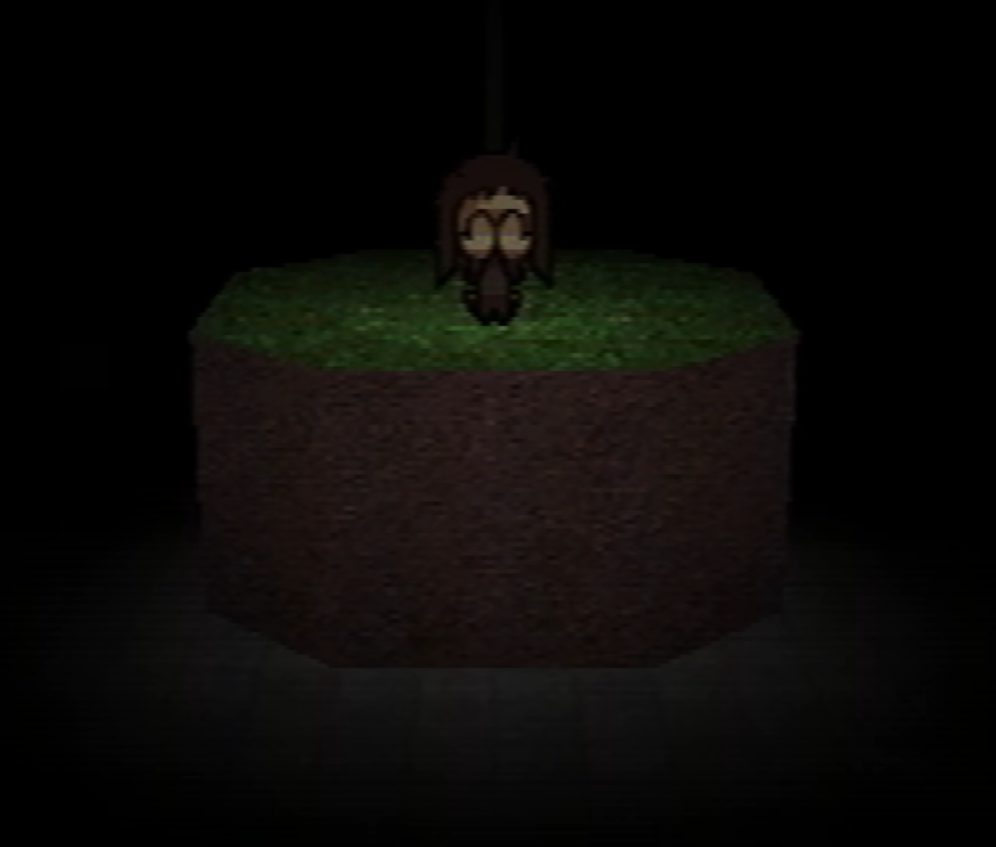Meet Paul, our host and first–time Let’s Player, as he guides us through the abandoned technicoloured dreamworld of Petscop. This quiet and unassuming man has invited us all to be witness to lost media, to an unfinished game which many had previously thought to be a myth. Thanks to Paul, we have the opportunity to explore the many corners of this crunchy looking Playstation game, with all its unfinished textures and obscure game mechanics still intact. Developer Garalina’s magnum opus is a familiar blend of bright colours, cheery plinky–plonk music, and veiled child abuse. Although Paul’s personal connection to the game is unknown, he has curated for us a look into the greatest game you’ve never played.
Throughout the 24–episode run of the Petscop Let’s Play series, the fictitious nature of Petscop as a game was kept deliberately obscure. No credits to look through, no promotional Twitter page, just sparsely uploaded game footage, cryptically commented on by Paul, the purported owner of the channel. If I were to detail out the specifics of the plot itself, none of it would be too unfamiliar to fans of copypasta, the shared horror stories that filled the early internet. Man is gifted an early copy of a videogame, game features elements that suggest it is haunted, man is swept away by the horror of it all, etc… But Petscop sets itself apart from its forebears with its sense of authenticity, and the subtlety of its slowly–building terror.
Something that developers can learn from this fictitious game is how exactly it manages to prickle your goosebumps. The synthesis of horror and gameplay mechanics has often necessitated agency over the events happening, the player having some manner of control over their fate in the game world. And traditionally, this results in either shooty–bang–banging of enemies or the anticipation of jump-scares. Experiences more akin to rollercoasters. But the creators of Petscop are more interested in exploring the uncanny: deconstructing and distorting the familiar formats of Let’s Play and nostalgic video games.
Paul is talking to us familiarly, but always with the suggestion that he’s actually speaking to an unknown third party. Petscop the game is constructed around common tropes of the time period, but now reconstituted in ways that don’t make sense, darkly cryptic instructions and characters which confound our expectations. Important information about game mechanics and how they relate back to Paul’s real life is withheld, leaving the grotesque implications left for us to piece together ourselves. This isn’t the blunt excitement of a Resident Evil monster spitting acid in our face. This is the Resident Evil door–opening transition, where we slowly guess at what is in store for us. Retro video games are prime fodder for this kind of creepiness, the abstraction of old graphics leaving a lot more to the imagination, which is the perfect tool to really get under the skin.
This webseries format also promotes playfulness in of itself, working as a kind of augmented reality game, inviting the viewer to become a Petscop detective. The obscure nature of the writing created a cottage industry of YouTube videos and web forums meant to explore, undercover, and work out what Petscop really means. Fans scouring through website data to find who the ‘real’ owners are and how they relate to Paul. Fans becoming Wikipedia warriors to better comprehend what each character is in reference to. It’s fun. This kind of play can be seen in the storytelling of Dark Souls, where fans try to put together the many narrative puzzle–pieces. Or how The Binding of Isaac tasks the community with collectively working out its most convoluted secrets to truly finish it.
This dedication to keeping the audience guessing, to making them work to understand the unsettling imagery presented to them, is Petscops defining feature. It’s what makes us come back for more. While the series has its minor criticisms (the references to real–life child abuse cases feels rather exploitative, for instance), it still stands as a monument to what this medium is capable of. And the horrific feelings Petscop evokes from using the aesthetics of video games can, and should, be reintegrated back into gaming itself.
Screenshots by author, taken from: Petscop. https://www.youtube.com/channel/UCZKQv0ZFHpeIUkOtNjtq4KA

